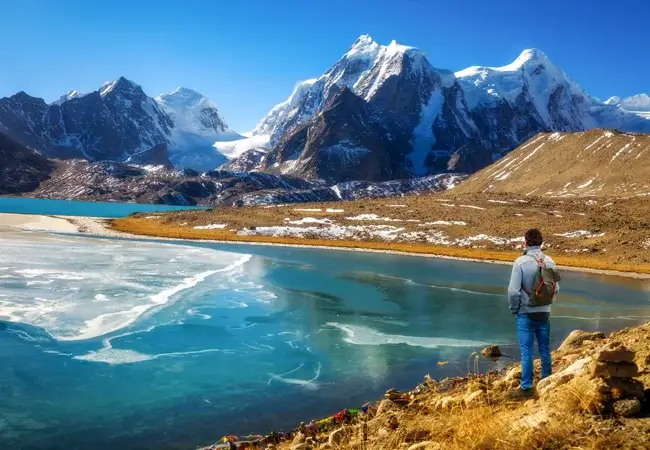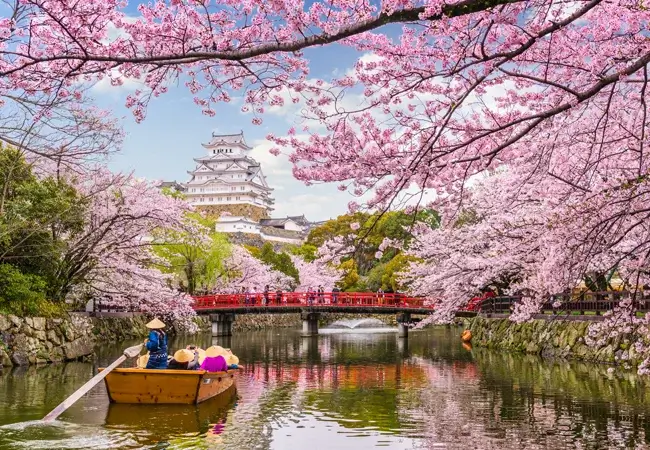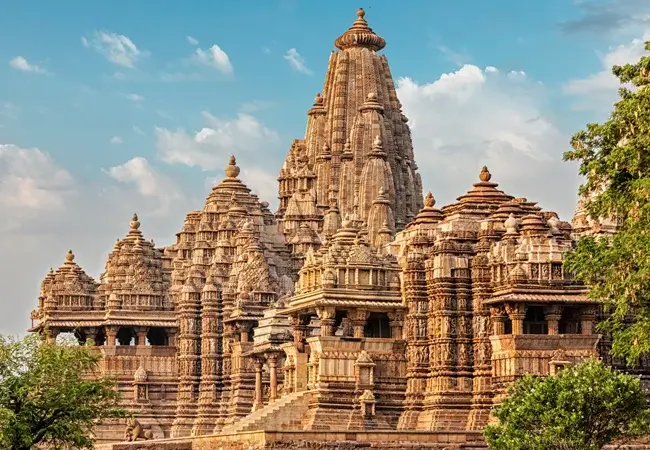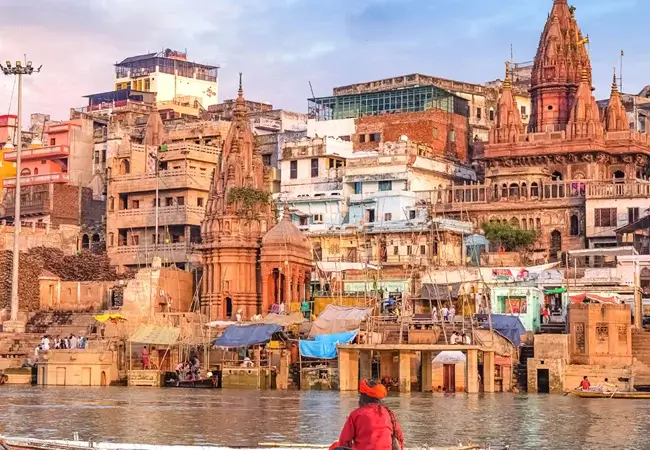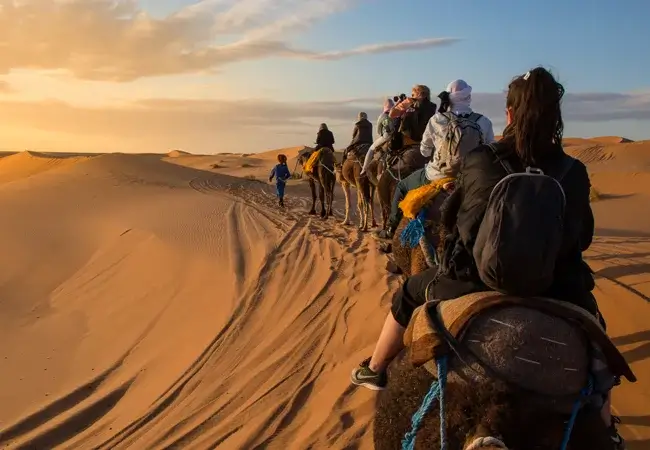One of the most popular religious destinations which are not only significant to everyone irrespective of religion is the Golden Temple that is glorifying entire Punjab. The Golden Temple is also known as the Harmandir Sahib which means “abode of God” in the Punjabi language. It is a gurudwara (a holy place for people who follow Sikhism) located in the city of Amritsar, Punjab. The other remarkable holy sites in Sikhism are the Gurudwara Darbar Sahib Kartarpur in Kartarpur and Gurudwara Janam Asthan in Nankana Sahib.
There is an artificial pool on the site of the temple that was completed by the fourth Sikh Guru, Guru Ram Das in the year 1557. Since this holy temple had been subjected to destruction several times due to the attacks it received from the Mughals and Afgan army, it was repeatedly built by the Sikhs. It is to be noted that Maharaja Ranjit Singh rebuilt the temple using marble and copper in the year 1809 after founding the Sikh empire. Moreover, he also overlaid the sanctum with gold leaf in 1830. Hence, this temple received the name “Golden Temple”.
From a spiritual point of view, this temple is considered to be the most significant shrine. It is an open house of worship for all people from all walks of faith. The temple comprises four entrances and a circumambulation path around the pool. The four entrances depict the Sikh belief in equality and the view that all people are welcome in their holy place irrespective of the religion they follow or practice. The complex is an amalgamation of buildings around the sanctum and the pool. The chief center of the religious authority of Sikhism is Akal Takht. The additional buildings include a clock tower, the offices of the Gurudwara Committee, a Museum, and a langar (a free Sikh community-run kitchen that offers a vegetarian meal to all visitors without discrimination). More than 150,000 people tend to visit this temple every day and offer their prayers to God.

The border crossing has derived its name from Wagha village located near the Radcliffe Line, the boundary forming the line of demarcation between India and Pakistan. When India attained independence in the year 1947, migrants from India entered Pakistan through this border crossing and vice versa. The Wagah Railway Station is 400 meters to the south and 100 meters from the border.
A ceremony called the Wagah-Attari border ceremony tends to happen at the gate of the border, two hours before sunset each day. The conduction of the flag ceremony is done by both the Pakistani Rangers and Indian Border Security Force (BSF), similar to the retreat ceremonies at Ganda Singh Wala/ Hussainwala border crossing and Mahavir/Sadqi International Parade Ground border crossing. The ceremony was initiated in the year 1980 as an agreement of peace.
It is a museum that holds innumerable memories of the destruction, damage, and suffering of the people of Punjab during the partition of India in the year 1947. Located at the town hall of Amritsar, this museum was built with the aim to become the central repository of stories, and materials, along with rare documents associated with the post-partition riots that followed the division of British India into two independent dominions: India and Pakistan. It came into effect on the 25th of August, 2017.
When the partition lines were drawn on a map by the British lawyer Cyril Radcliffe, it led to the division of the province of Punjab into West Punjab and East Punjab on the basis of religion. As a consequence, millions of people found themselves on the wrong side of the border overnight. According to a number of estimates, more than 800,000 Muslims, Hindus, and Sikhs were killed in the riots that followed the partition between August 1947 to January 1948.

The Jallianwala Bagh Massacre is also called the Amritsar Massacre. It took place in the year 1919. A large and peaceful crowd had gathered in the Jallianwala Bagh of Amritsar, Punjab to show their disappointment against the Rowlatt Act and the arrest of pro-independence activists Saifuddin Kitchlew and Satyapal. In response to the public gathering, the temporary Brigadier General, R.E.H.Dyer issued an order to shoot the crowd. As a consequence, the troops continued to fire as ordered by the Brigadier General till the time their ammunition was exhausted. Estimates of those killed vary between 379 and 1500+ people and over 1,200 other people were injured out of which 192 were seriously injured.
In the year 1920, a trust was founded to build a memorial at the site. The memorial was designed by American architect Benjamin Polk that was inaugurated by the then President of India Rajendra Prasad in the year 1961, in the presence of Pt. Jawaharlal Nehru. A flame was later added to the site.
The bullet marks are still present on the walls and adjoining buildings to this day. The well into which many people jumped to save themselves from the firing bullets drowned and lost their lives is also a protected monument inside the memorial park.

The Akal Takht is considered to be one of the five takhts (seats of power) of the Sikhs. It is located at the heart of the Golden Temple complex and was originally built under the supervision of Shri Guru Hargobind Ji as a place dedicated to justice as well as consideration of temporal issues, the highest seat of the earthly authority of the Khalsa (the collective body of the Sikhs) and the place of the Jathedar, the highest spokesman of the Sikhs.
Originally known as Akal Bunga, along with Baba Buddha and Bhai Gurdas, the sixth Sikh Guru built a 9-foot high concrete slab. Guru Hargobind put on two swords on the platform on 15th June: one indicated his spiritual authority and the other his temporal authority.
Considered to be the very symbol of Punjab, one cannot miss visiting this place while in Punjab. This fort is known to spread across an area of 43 acres, right in the heart of Amritsar city. It carries a glorious history of its own. It spans 261 years, right from the era of the Bhangi Misl to Maharaja Ranjit Singh to the British East India Company to the Indian Army. Now finally, it opens its gates to the people of Punjab.
Despite being under restoration, Gobindgarh Fort has managed to gain popularity within a short span of time. Hence, it has become of the most popular tourist destinations in Punjab.
Though it is a Hindu temple, it shares architectural similarities with the Sikh Harmandir Sahib (Golden Temple). This temple has derived its name from Goddess Durga, the chief deity of this temple. Besides, Goddess Lakshmi and Lord Vishnu are also worshipped here. Locals believe that this temple was built in 1921. But there are official records of the existence of this temple before 1921. It is confirmed by a record in the Amritsar District Gazetteer of 1893, which talks about Durgiana Sarovar and “Devi Durga” surrounding it which was thronged by pilgrims.

Tarn Taran Sahib has attained popularity among the Sikh people across the world due to the presence of Gurudwara Tarn Taran Sahib which tends to lie just at the center of the town. Besides, it is considered to be one of the most religious places in Punjab. According to local belief, this town was founded by the fifth Guru, Shri Guru Arjan Dev Ji and perhaps it is due to the fact that one can experience the essence of the true Sikh culture here right from its lanes to each and every corner of this region.

Since Punjab is one of the most prosperous states in the country, its food is also equally delicious and mouth-watering. This state is known for its rich, buttery flavours along with a wide range of both tempting vegetarian as well as non-vegetarian dishes. While in Punjab, one can’t miss trying out the most popular dishes called sarson da saag and makki di roti. Basically, sarson da saag is a stew prepared primarily using mustard greens and makki di roti is a flatbread made with cornmeal. Another delicious dish is called Karrhi which is a spicy, yellow gravy with cakes prepared using chickpea flour (besan), lemon juice, red pepper and turmeric. It is commonly served with rice or naan. Some of the common breakfast options one can opt for while exploring Punjab are chana masala, naan, chole kulche, aloo paratha, paneer paratha, gobi paratha, paratha with curd, paratha with butter, halwa poori, bhatoora, falooda, dahi vada, khoa, paya and many more.
Most importantly, no celebration in a Punjabi household can be complete in the absence of Butter chicken. The local cuisine of Punjab seems to be heavily influenced by the agriculture as well as farming lifestyle prevalent from the times of the ancient Indus Valley Civilization. Basmati rice is an indigenous variety of Punjab and various other dishes have been developed and modified using it.

The ideal time to visit Punjab is during the winter season which starts in October and extends up to March-end. During this period, the climate remains extremely pleasant.






